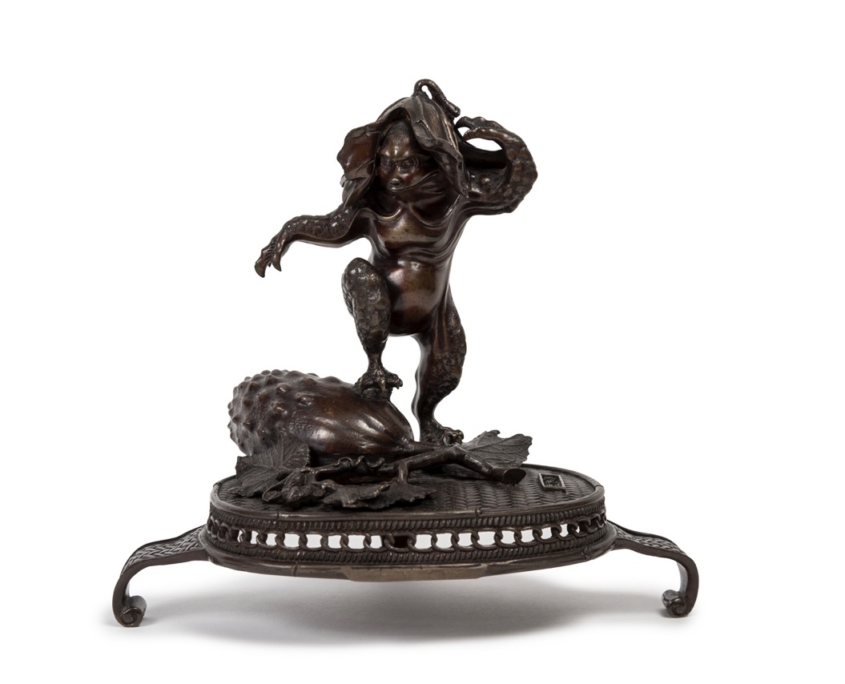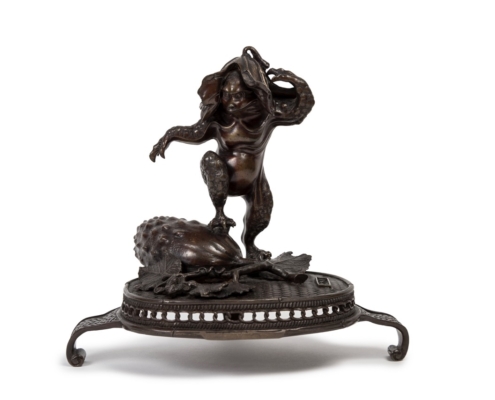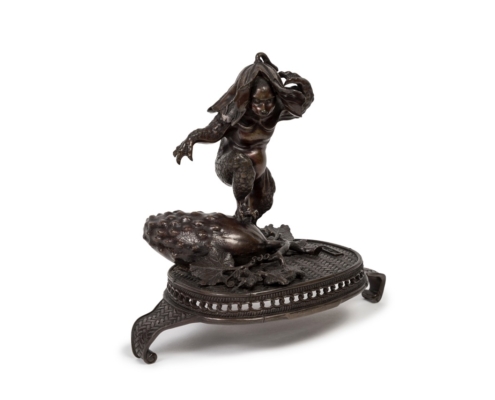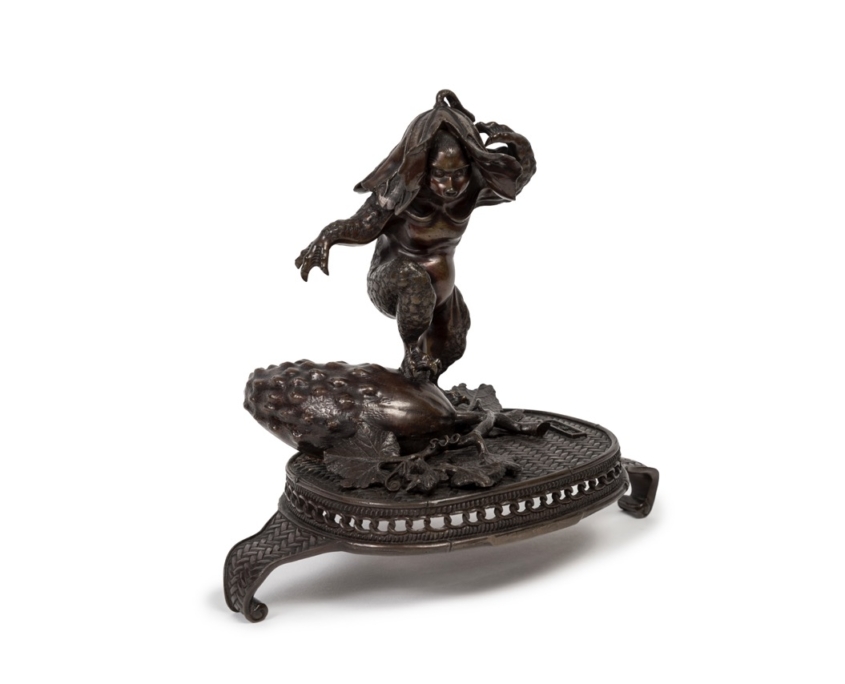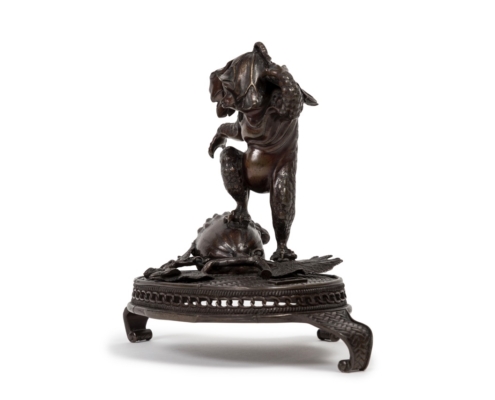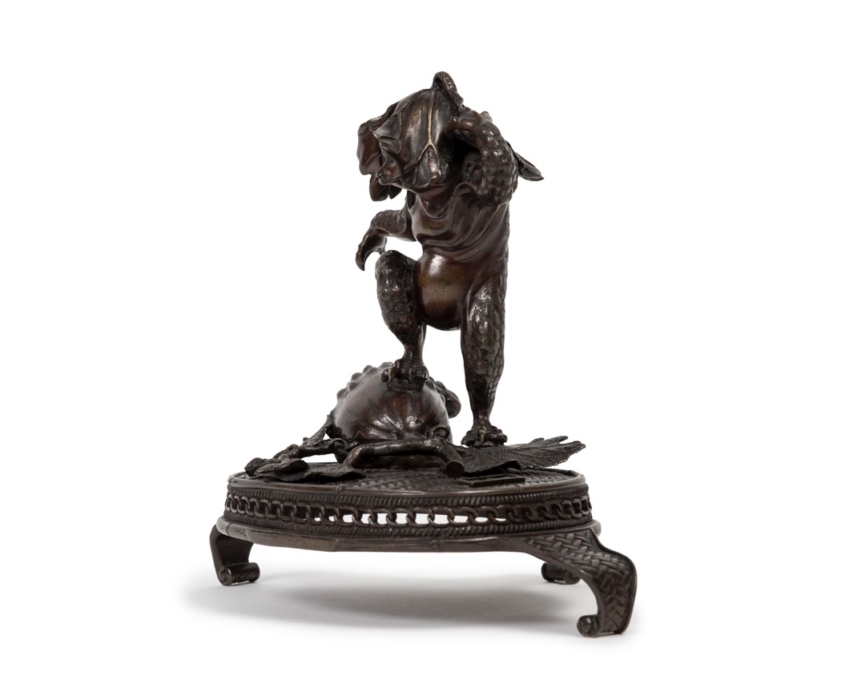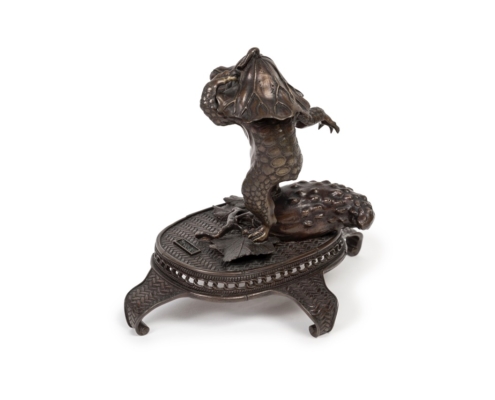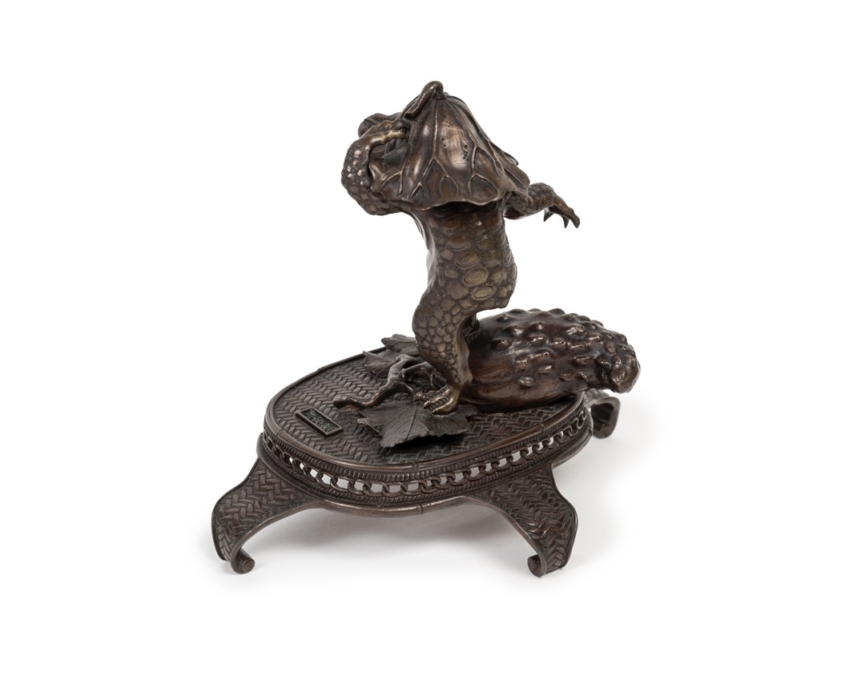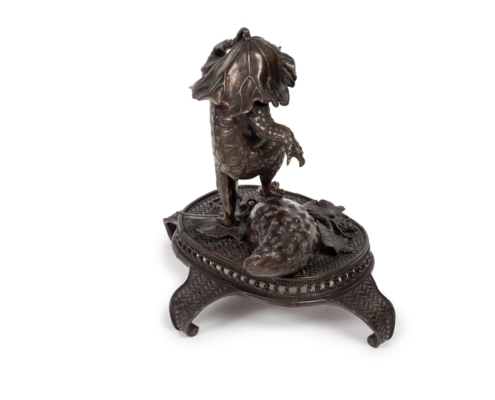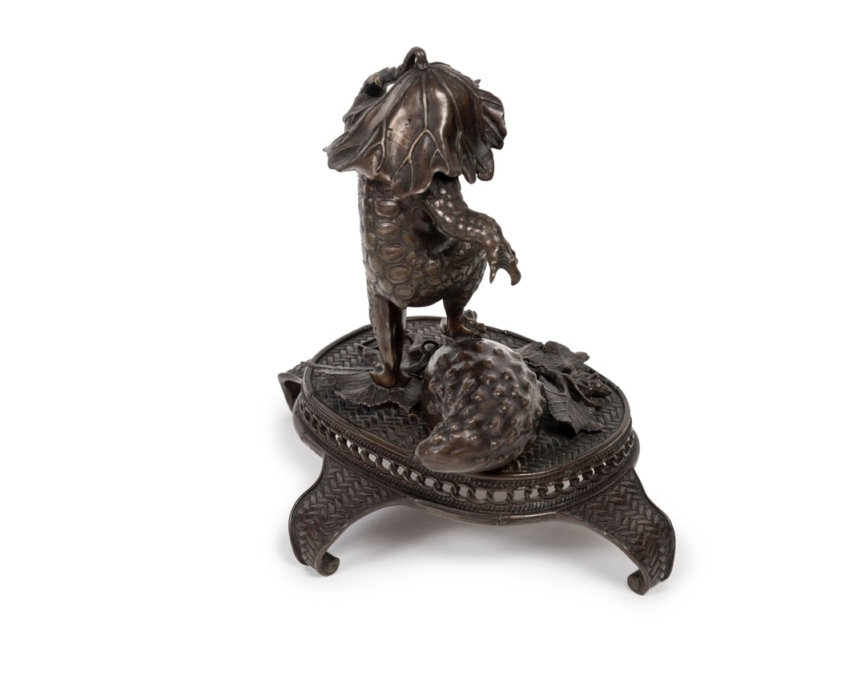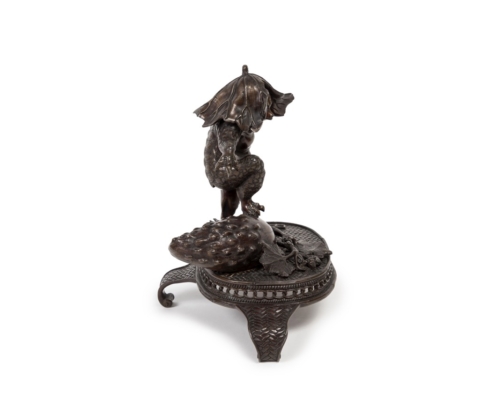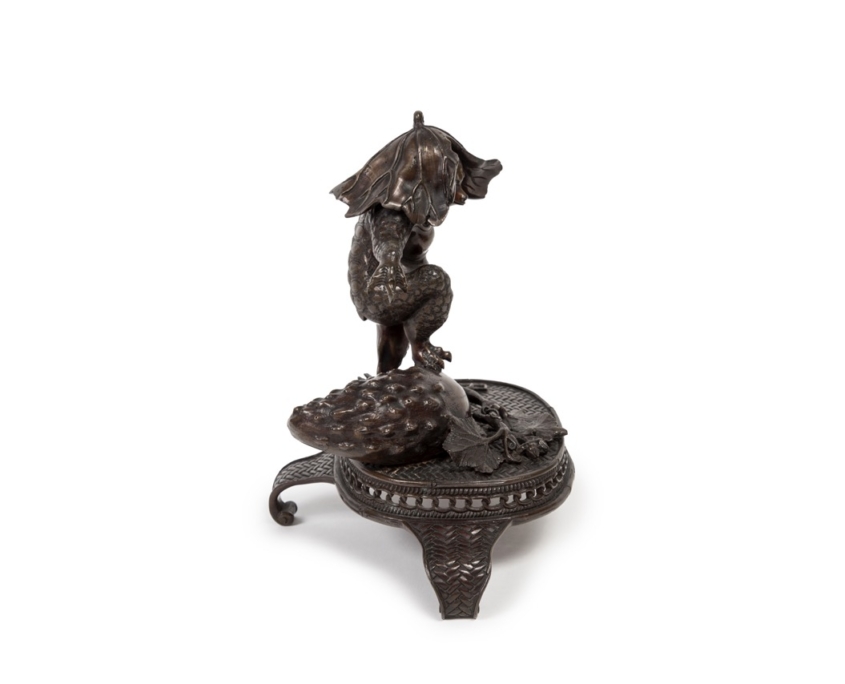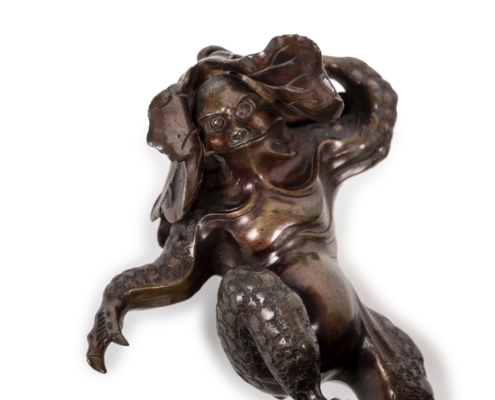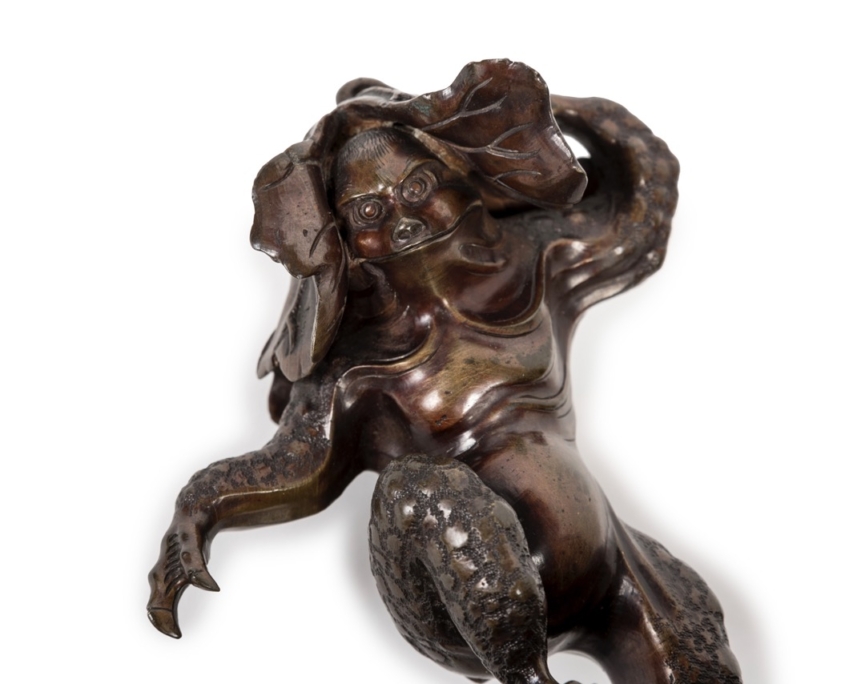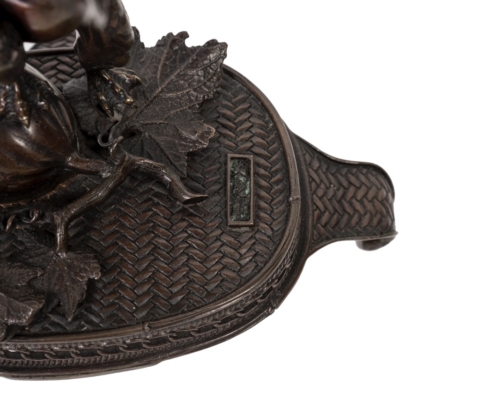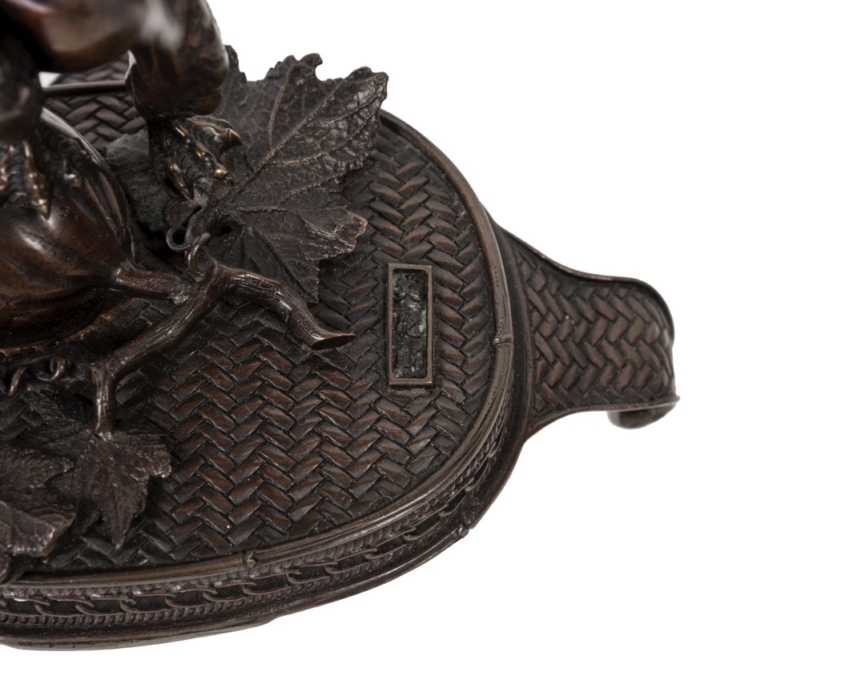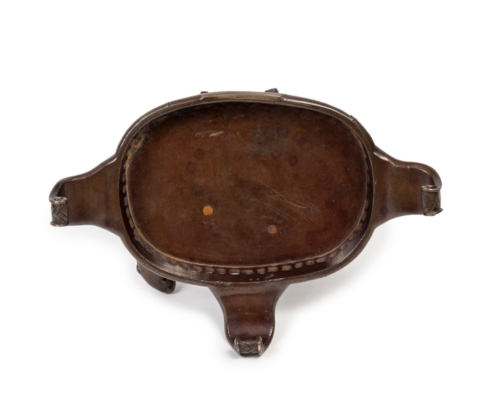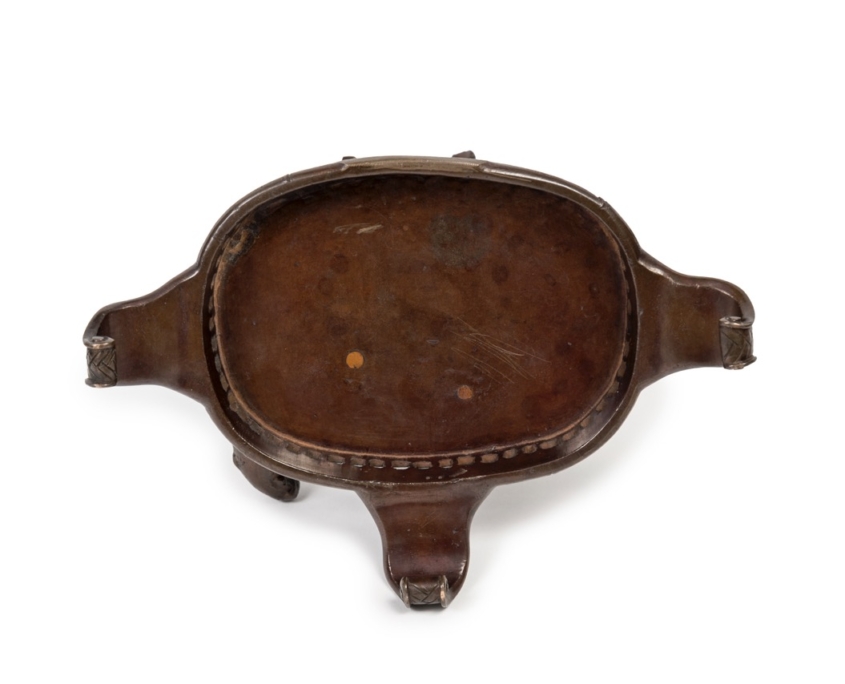The kappa (河童) is a aquatic creature taken from Japanese folklore having the appearance of an anthropomorphic turtle.
His skull is either slightly hollowed out to accommodate water, from which it derives its power, or hidden with a water lily leaf hiding this sag. Naturally polite, it is advisable to bow to him in order that it should do so in return, thus losing all the water he has gathered and leaving it harmless.
Kappa has the reputation of attempting to lure both humans and animals into the water. In some areas, it ravages fields, stealing eggplants and cucumbers. Some people prefer to worship it and give it offerings rather than be its victims.
Signed Shokaken (笑花軒). His real name is Ôshima Yasutarô. He was born in 1849 and is the third generation of a metalworkers family. Together with his brother Ôshima Joun (1858-1940) he ran a studio called Sanseisha (Shinagawa district, Tokyo) known for producing the finest bronzes. Shokaken exhibited his work in many international exhibitions, as for example an incense burner at the Vienna World Exposition in 1873, which is now in the Austrian Museum of Applied Arts and Contemporary Art in Vienna.




